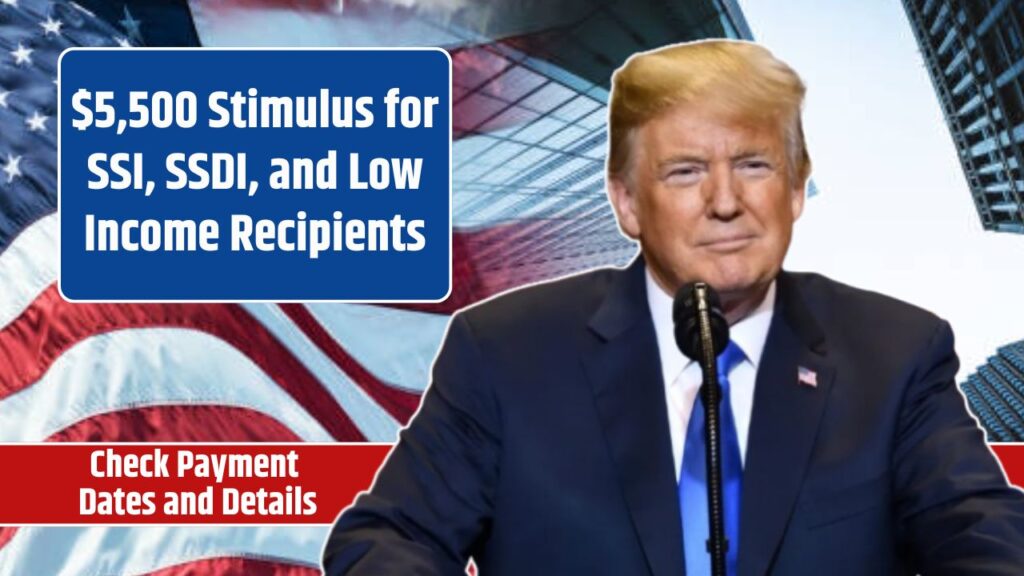As April 2025 unfolds, talk of a potential $2,500 stimulus check is making waves, particularly among Social Security recipients, low-income earners, and taxpayers still grappling with economic strain. While nothing has been signed into law, the speculation stems from ongoing concerns about inflation and the cost of living. So far, the IRS and federal government haven’t confirmed any such payment—but that doesn’t mean it’s off the table. Here’s what you need to know to stay prepared and informed.
At a Glance: The $2,500 Stimulus Rumor
| Topic | Details |
|---|---|
| Stimulus Amount | $2,500 (unconfirmed) |
| Potential Eligibility | Based on income, filing status, and dependents |
| Payment Methods | Direct deposit, paper checks, or prepaid debit cards |
| Expected Timeline | No official announcement or rollout schedule yet |
| IRS Website | irs.gov |
Currently, no legislation has been passed authorizing a $2,500 stimulus. While rumors are widespread, they remain unverified. Still, it’s a smart move to stay up to date and have your documentation in order just in case.
Why Is a $2,500 Stimulus Being Talked About?
The buzz began with unofficial reports and increased public chatter online about more aid for vulnerable groups. With inflation still impacting everything from groceries to utilities, there’s renewed interest in direct financial relief.
What has been confirmed is a $1,400 payment still available for around one million people who didn’t claim their 2021 Recovery Rebate Credit—a completely separate issue from the rumored $2,500 check.
A Look Back at Past Stimulus Payments
If history repeats itself, any new relief package would likely follow similar patterns to earlier rounds:
| Year | Stimulus Amount | Reason |
|---|---|---|
| 2020 | Up to $1,200 | COVID-19 economic crisis |
| 2021 | Up to $1,400 | Pandemic-related hardship |
| 2008 | Up to $600 | Great Recession stimulus |
| 2001 | Up to $300 | Economic slowdown |
Each of these checks came after Congress passed specific legislation, followed by prompt action from the IRS.
Who Could Be Eligible?
If a $2,500 stimulus check gets the green light, here’s who would likely qualify:
1. Income Requirements
- Individuals earning up to $75,000
- Married couples earning up to $150,000
- Phase-out begins above these limits, ending at:
- $99,000 for individuals
- $198,000 for married couples
2. Filing Status
- Tax return filers for 2023 or 2024 would be prioritized.
- Non-filers may need to submit additional forms or rely on existing benefit data, particularly seniors or disabled individuals.
3. Dependents
Additional funds may be granted for:
- Children under 18
- College-aged dependents
- Adults with disabilities
4. Recipients of Federal Benefits
Those receiving Social Security (SSA), SSI, SSDI, or VA benefits could automatically qualify, using government records without needing to file again.
How Payments Would Be Distributed
Should a $2,500 payment move forward, expect it to roll out using tried-and-true methods:
- Direct Deposit: The fastest method if your banking info is current with the IRS or Social Security.
- Paper Checks: Mailed to those without electronic payment details.
- Prepaid Debit Cards: Used for individuals without a bank account.
Tip: Visit IRS.gov to confirm your deposit information or update your mailing address.
Timeline: When Could Payments Arrive?
While there’s no official schedule, past timelines provide clues:
- Congress passes legislation
- President signs the bill
- IRS begins issuing payments within 2–3 weeks
Typically, direct deposits arrive first, followed by mailed checks and debit cards. Most recipients get their funds within 1–3 months after approval.
What You Can Do Now
Even if the check hasn’t been approved, it’s a good time to:
- File your 2023 tax return if you haven’t already
- Update direct deposit details with the IRS or SSA
- Ensure your mailing address is current
- Monitor only trusted sources like irs.gov for updates
Avoid relying on social media or viral posts—most are based on speculation, not facts.
Will the IRS Bring Back the “Get My Payment” Tool?
If a stimulus is approved, the “Get My Payment” portal would likely return. Previously, this tool helped Americans track their payment status, including:
- Payment method (direct deposit, check, or debit card)
- Estimated delivery date
- Any issues or delays
To use it, you’ll enter your Social Security number, birthdate, and mailing address for access.
FAQs:
1. Is the $2,500 stimulus check confirmed?
No. As of now, there is no official approval or legislation authorizing a $2,500 payment.
2. Who might qualify if it’s passed?
Likely based on income, tax status, and dependents—similar to past stimulus programs.
3. Will Social Security recipients get it?
If approved, most SSA, SSDI, SSI, and VA recipients could be automatically eligible.
